Orchids bloom at least once yearly, after which the flowers fall off. If you’re a first-time grower, you might be left asking if the flowers will reappear.
Well, orchids grow back, provided you give the plants time and create a proper growing environment.
Cut off their spikes once the flowers fall off and ensure that the remaining plant receives adequate sunlight.
The recommended temperature range is between 60oF to 75o F. Remember to water the flowers and apply phosphorus fertilizer to encourage blooming.
How Often Do Orchids Bloom?
All orchids will bloom at least once a year.
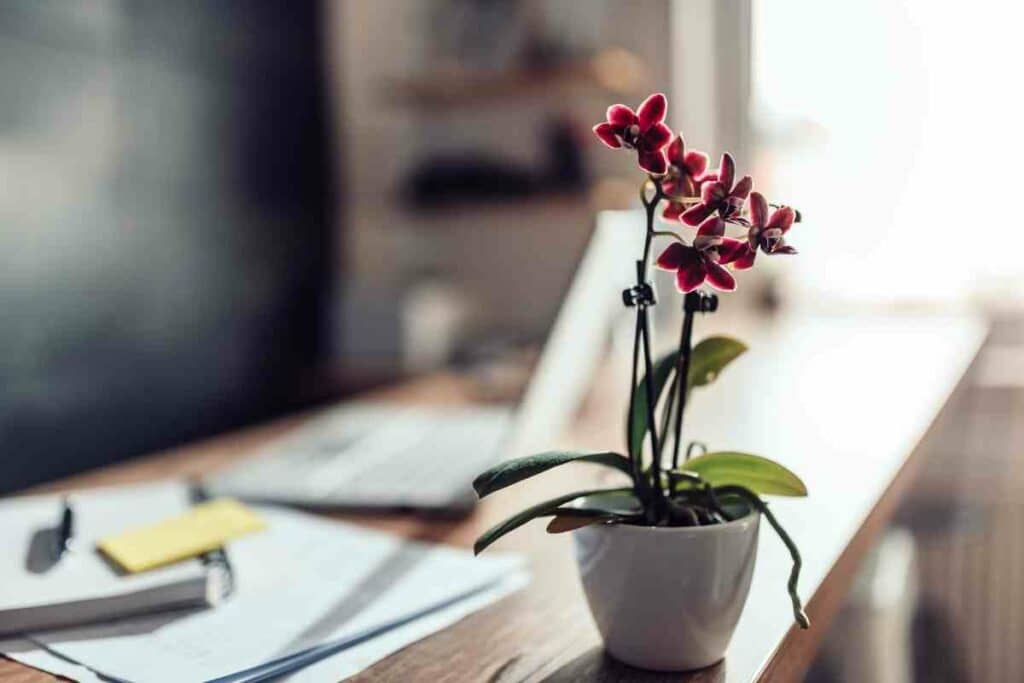
However, some species produce flowers more than once every year.
Because they’re perennial plants, orchids don’t die after blooming.
Although orchids are relatively hardy and can withstand challenging environments, creating conducive conditions for blooming is advisable.
A healthy orchid produces flowers yearly, and this promotes optimal growth.
What Happens After Flowers Fall Off?
Ultimately, the flowers will grow back.
You can hasten the process by cutting off the remnant spikes from the old flowers.
Key Takeaway – Removing the spikes reduces the load on the plant since it directs all nutrients to promote leaf and root development.
How to Regrow Orchid Flowers
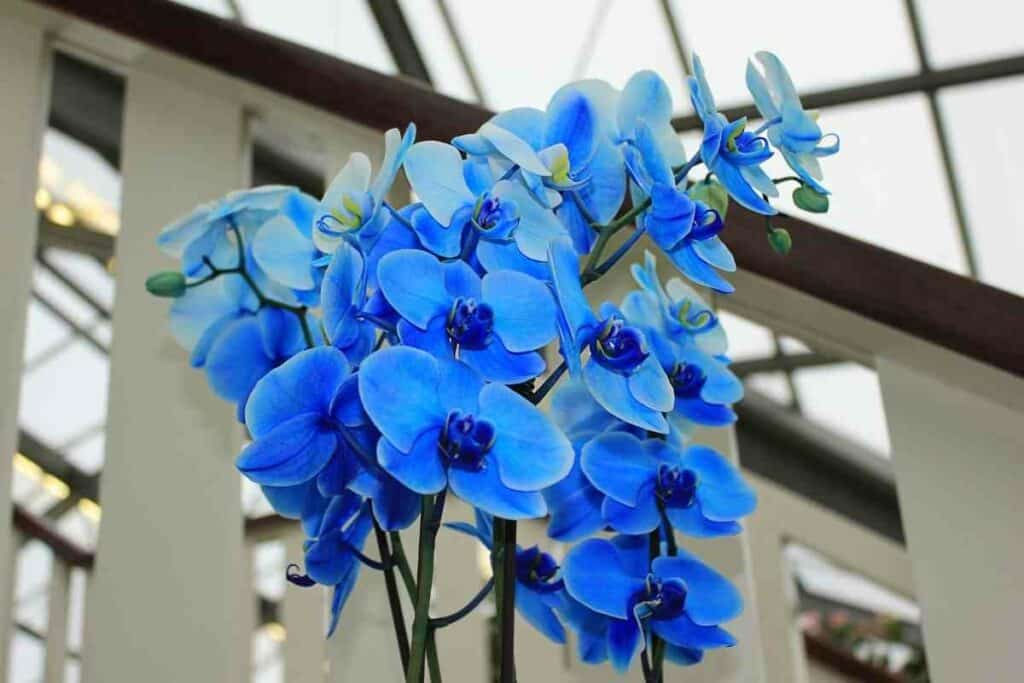
Here are valuable tips to get your orchids to flower again.
1. Cut the Spikes
When the last flower falls off, and the spike turns brown, use a sterilized pair of scissors or scalpel to remove the spike.
It shouldn’t exceed three inches long.
The species of orchid you have determines how you cut the spike.
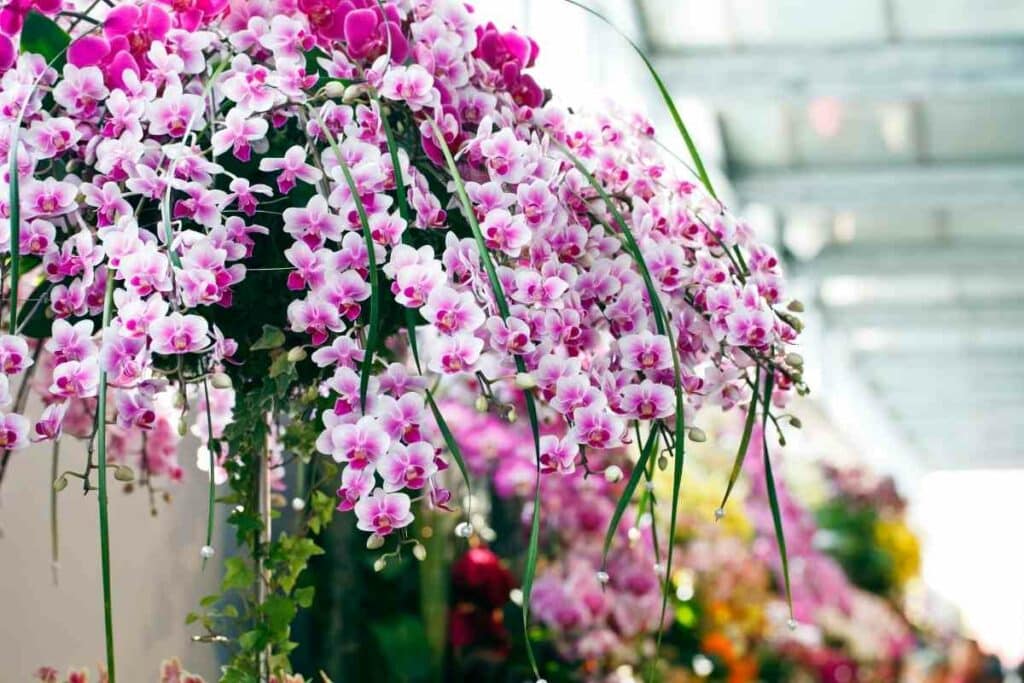
Moth Orchids – also known as Phalaenopsis orchids, are the only variety that grows new flowers on old spikes.
If you have them, you can leave a bit of the remnant spike when cutting.
Otherwise, you’ll need to sever the spike at its base.
2. Treat Diseases and Apply Protection
Orchids are vulnerable to fungal infections.
Ensure that you apply fungicide on the cut surface to prevent future complications.
Be careful so that the chemical doesn’t touch the roots, as it can harm the plant.
Treat any diseases to quicken the blooming of flowers.
If the plant has a viral infection, place it in isolation to prevent the condition from spreading.
3. Water and Apply Fertilizer
After treating the plant, grow it under normal conditions.
Place it in a well-lit area, but not under direct sunlight.
Ensure that the temperature ranges between 60 and 80 degrees Fahrenheit.
This allows the plant to recuperate the energy lost during blooming – without it, it’s difficult for flowers to regrow.
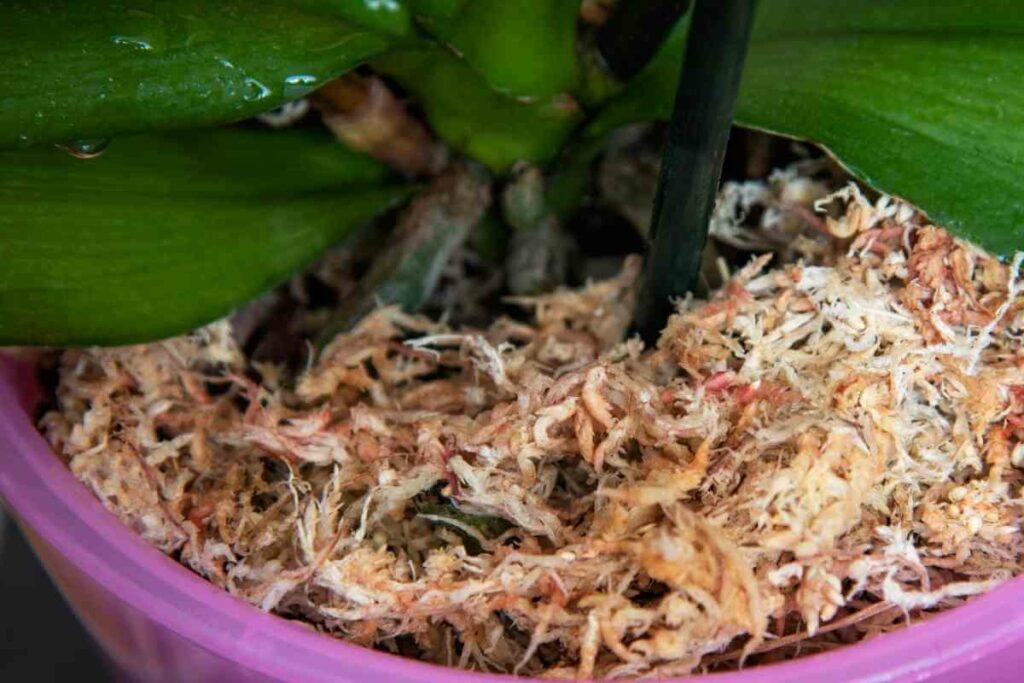
Since orchids grow on soil-less media, you’ll need to water the plants two to three times weekly, depending on prevailing temperature and humidity.
Please avoid moistening the leaves when watering your orchids.
Contrary to popular belief, orchids don’t thrive in soggy conditions:
- Empty the pot after every watering session and let the plant use the moisture retained by the growth media.
- You also need to apply phosphorus fertilizer to boost growth and promote flowering.
- Use a diluted solution with a 25% or less concentration, or spread pellets of controlled-release fertilizer inside the pot.
Regardless of your preferred application method, use fertilizer sparingly because excessive amounts can hurt the plant.
4. Move to a Colder Place
Orchids start a fresh flowering cycle when fully grown leaves develop after removing old spikes.
When this happens, shift the plant to a colder place, with night temperatures ranging between 50 and 60 degrees Fahrenheit.
The temperature drop further hastens the blooming cycle.
5. Wait for New Spikes
Under cold conditions, an orchid takes four to six weeks to produce new spikes.
These spikes resemble an inverted root with a tipped apex.
If the spike doesn’t appear after six weeks, you can apply blooming fertilizer to stimulate its growth.
6. Return to Original Position
Upon the emergence of new spikes, you can return your orchid to its original position.
Apply fertilizer weekly until the orchid grows new flowers.
When the blooms wither, repeat this process.
How Much Time Do You Wait Until New Spikes Emerge?
Once the buds emerge, the plants take one to twelve months to grow new spikes.
Overall, this is a slow growth rate, but some varieties start blooming within three months after buds become visible.
Some species take more time to produce new spikes after flowering.
Temperature and lighting affect the rate of spike development in orchids.
Higher temperatures increase metabolism, resulting in faster spike growth.
Likewise: More light facilitates photosynthesis, producing the energy used to grow new spikes.
How to Take Care of Your Orchids
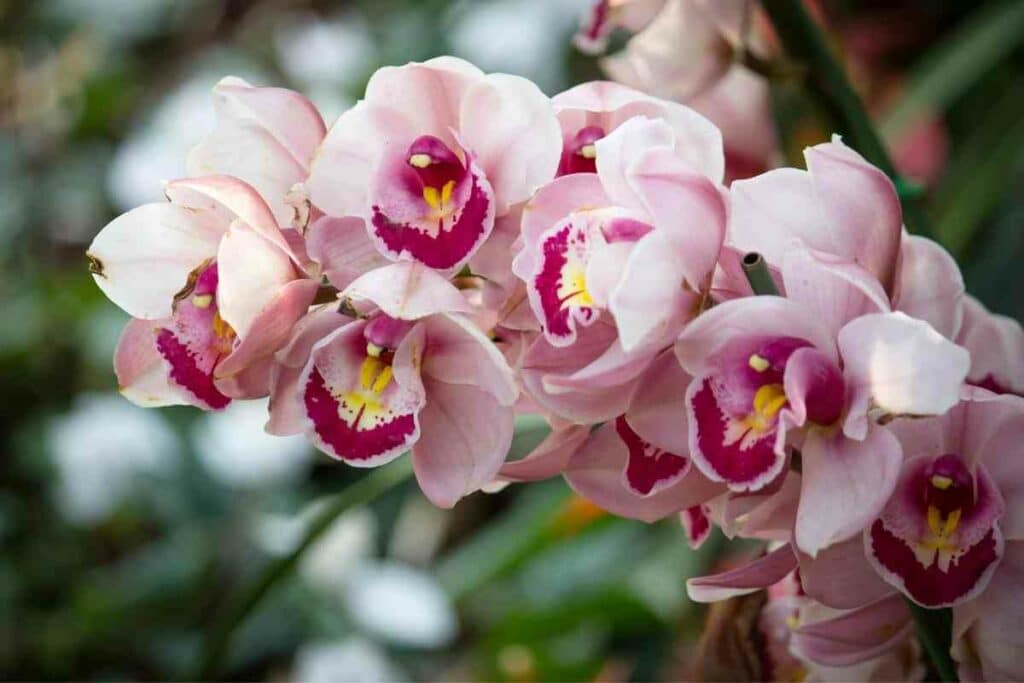
Orchids are beautiful plants that flourish under specific conditions.
However, they need more care than other houseplants.
The following are valuable care tips to encourage your orchids to produce more flowers.
Lighting
Like other plants, orchids require an adequate amount of sunlight for photosynthesis.
However, it isn’t advisable to place them under direct sunlight.
If your house has east or west-facing windows, these are the best spots to place your orchids.
Otherwise, you can use fluorescent lighting.
Overexposure to sunlight causes the development of black tips on the plant’s leaves.
On the Other Hand – Underexposure causes stunted growth. Depending on the symptoms, you’ll know if you need to increase or reduce lightning.
Temperature
The ideal temperature range for growing orchids is between 65 and 75 degrees Fahrenheit.
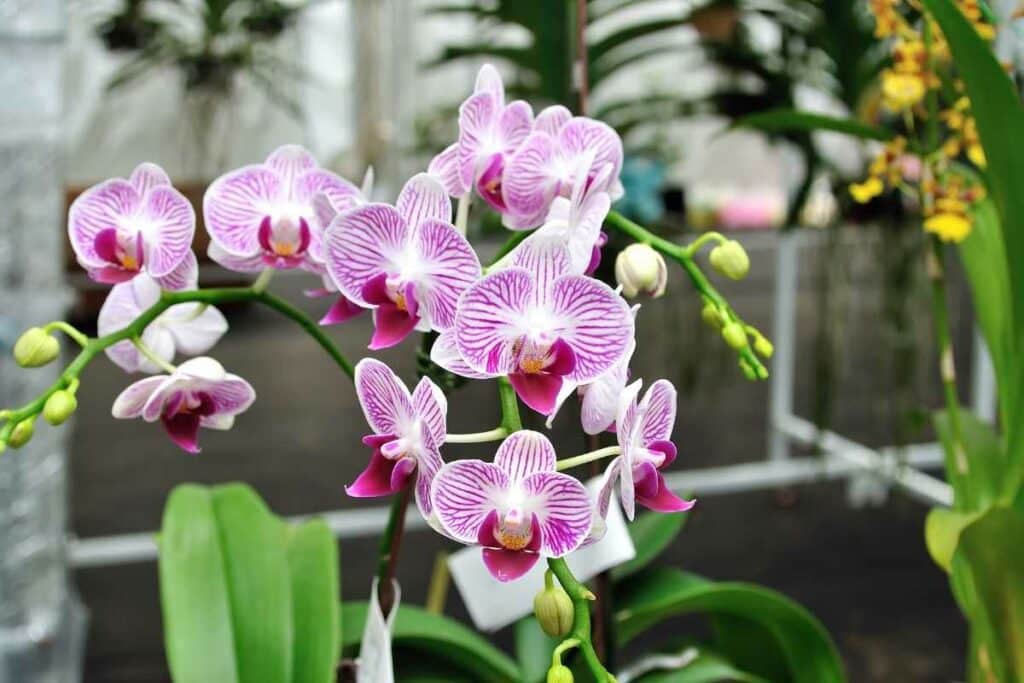
However, the plants can withstand temperatures as high as 85 degrees during the daytime and as low as 60 degrees at night.
Avoid growing the plant in areas that experience extreme temperature variations. It helps to plant orchids indoors.
Watering
Orchids don’t need a lot of water to grow.
Watering once weekly is enough to keep the plant healthy.
It’s also vital to check the growth media – if it feels dry, add water.
The best way to water orchids is to remove the plant from its pot and place it in a plastic grower’s pot.
After Moving – Let tap water run over the growth media for 15 seconds without moistening the crown and leaves.
Dry the plant for ten minutes before returning it to its pot.
Alternatively, you can water the orchids using ice cubes.
Repotting
Over time, orchids grow many and more extensive roots that can’t fit the container.
Overcrowded roots can disrupt ventilation, resulting in slower growth rates.
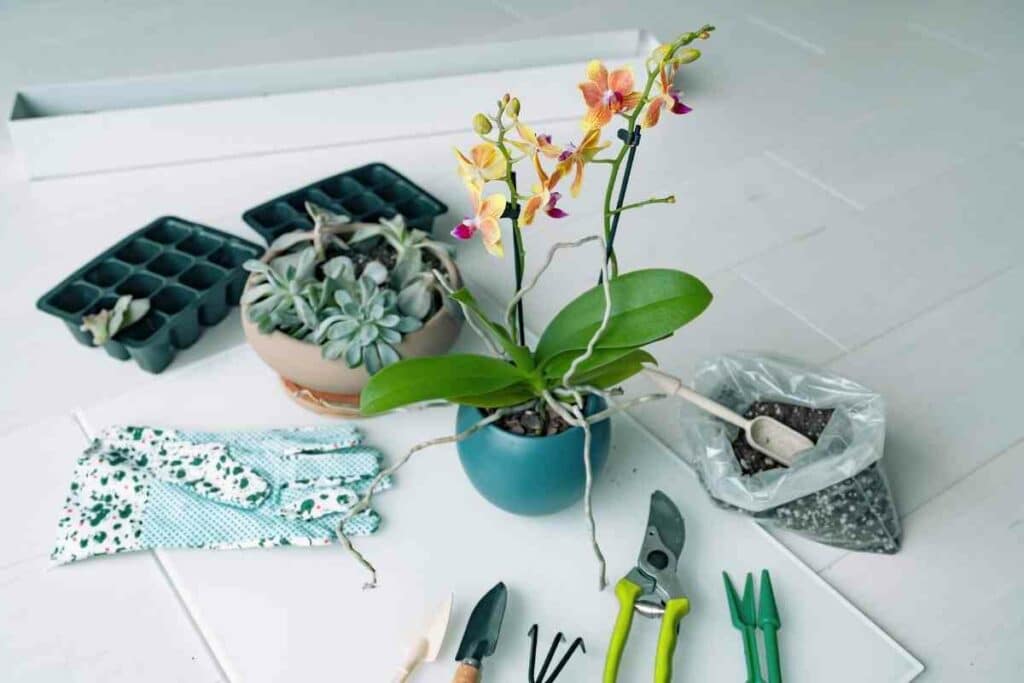
The solution to this is repotting your plant in a larger container.
When the roots start turning brown or emerge above the upper surface of the growth media, it’s time to repot your orchid.
You also need to move your plant to another container after completing every blooming cycle.
Since orchid roots are soft, avoid breaking them during repotting. Instead of garden soil, use a special potting mix for growing orchids.
Additional Tip
It isn’t advisable to place your orchids close to ripening fruits.
During this period, the fruits produce gases that can hurt your orchids.
Wrapping Up
When you grow orchids for many years, you’ll be able to tell when the blooming season is approaching.
Some varieties flower annually, while others bloom every few months.
It also helps to understand the development cycle of your orchids, as this varies with different species.
Orchids grow back, even after blooming. However, you must take proper care using the tips mentioned above if you want the beautiful flowers to reappear.
It takes time to learn all the steps, but it’ll be straightforward once you become a master.
